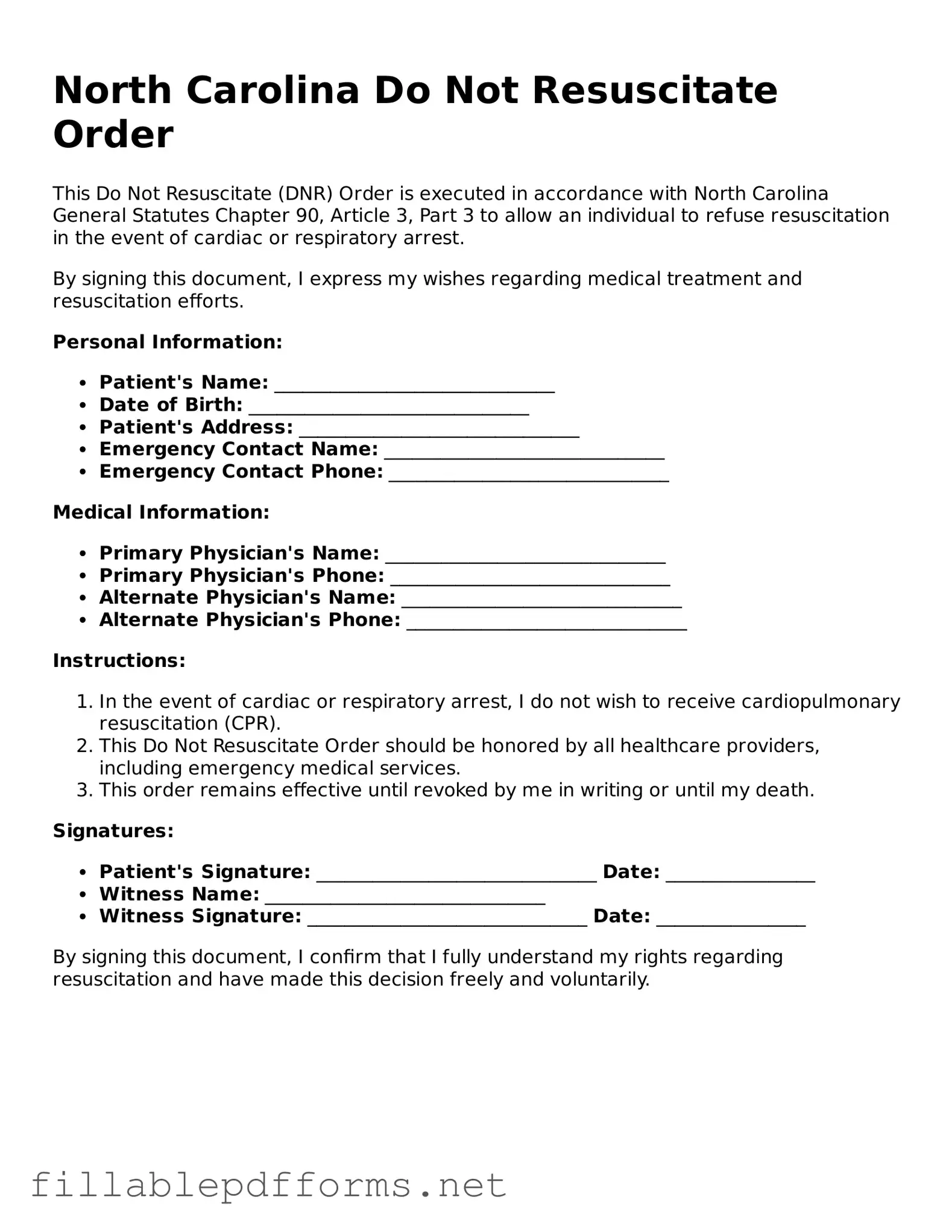Attorney-Verified Do Not Resuscitate Order Form for North Carolina State
A North Carolina Do Not Resuscitate Order (DNR) form is a legal document that allows individuals to express their wishes regarding resuscitation efforts in the event of a medical emergency. This form is crucial for those who prefer not to receive cardiopulmonary resuscitation (CPR) or other life-saving measures. Understanding this document can help ensure that personal healthcare preferences are honored in critical situations.
Launch Editor Here
